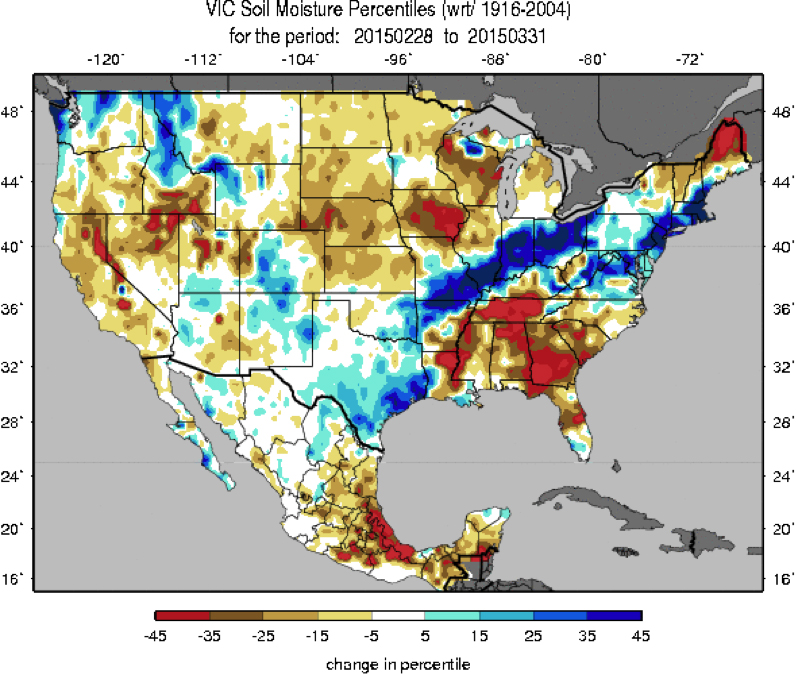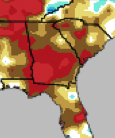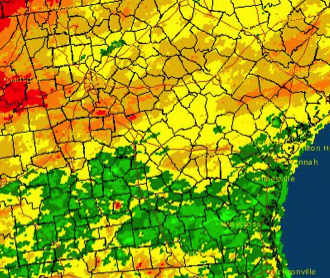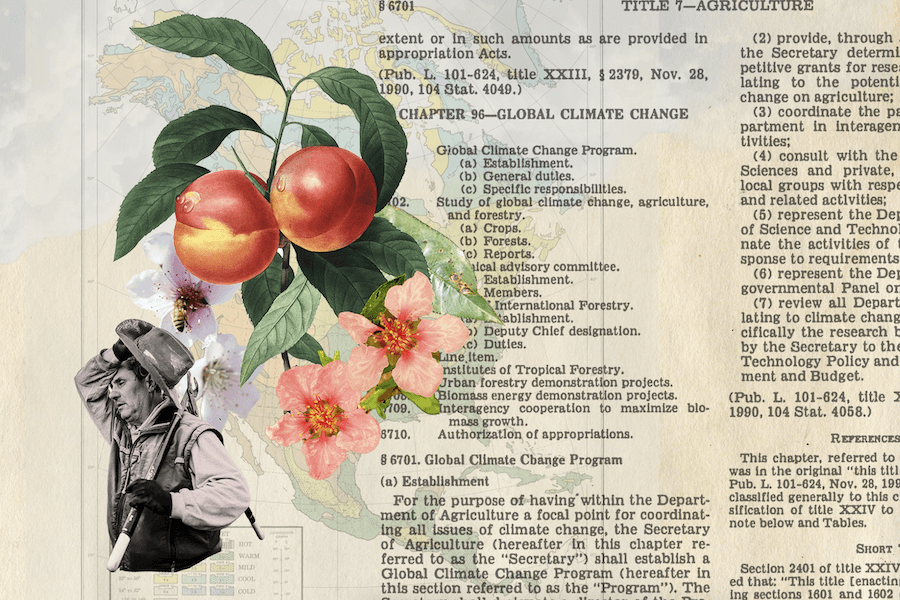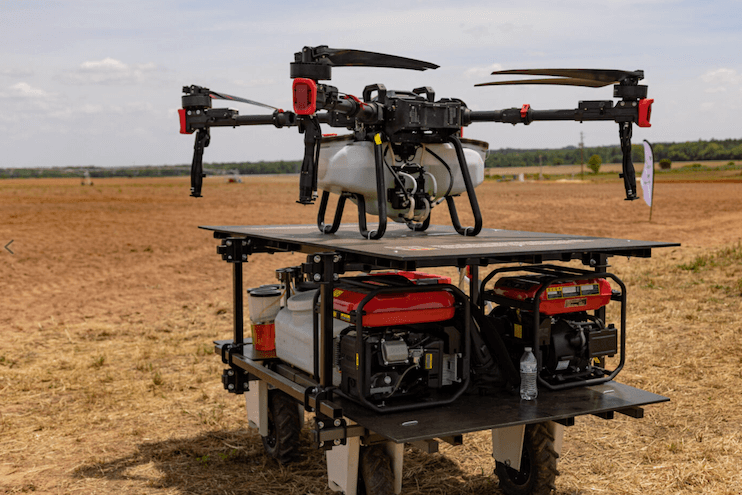March 2015 was warmer and drier than usual for most of Georgia. While the warmth encouraged rapid growth of planted corn and other crops, cold conditions late in the month may have caused some damage to fruit blossoms. The warm and dry conditions also increased soil moisture shortages across the region.
Planting is in high gear across the state. Soil temperatures increased quickly due to the warm and dry conditions, and observers in southern Georgia reported rapid growth in planted corn. However, dry conditions were a concern for some farmers worried about germination. Abnormally dry conditions expanded from 9 to 42 percent of the state over the month, according to the National Drought Monitor.
Frost hit the northern half of Georgia late in the month. Some damage to fruit blossoms in bloom at the time was expected to occur, but no estimates of damage were available at the time this report was written. If you have damage to report, please email Pam Knox at pknox@uga.edu.
The outlook for April shows that warmer- and wetter-than-normal conditions should occur across most of Georgia for at least the first half of the month, with wetter-than-normal conditions expected to continue through June under the influence of the current El Niño. This should help to alleviate current dryness. Warmer-than-normal conditions have a slightly above average chance of occurrence over summer and fall based on long-term trends in temperature.
In Atlanta, the monthly average temperature was 57.6 degrees Fahrenheit, 3.3 degrees above normal; in Athens it was 56.8 F, 2.5 degrees above normal; in Columbus it was 60 F, 2.2 degrees above normal; in Macon it was 58.4 F, 1.6 degrees above normal; in Savannah it was 62 F, 2.8 degrees above normal; in Brunswick it was 62 F, 1.7 degrees above normal; in Alma it was 62.1 F, 1.9 degrees above normal; in Augusta it was 58.3 F, 2.4 degrees above normal; in Albany it was 63 F, 3.8 degrees above normal; and in Valdosta it was 64.6 F, 4.5 degrees above normal.
In Athens, for most of the month, both maximum and minimum temperatures were above normal values. Athens set a record high of 87 F on March 16, breaking the old record of 85 F set in 2012. Savannah set a record high of 87 F on March 11, surpassing the old record of 85 F set in 1990. Several record highs were also tied during the month. Cold temperatures near the end of the month also set records. On March 29, Macon set a new daily record low of 27 F, breaking the old record of 30 F set in 1966.
The highest monthly total precipitation from National Weather Service reporting stations was 3.04 inches in Augusta (1.14 inches below normal) and the lowest was in Savannah at 2.02 inches (1.71 inches below normal). Atlanta received 2.98 inches (1.83 below normal), Athens received 2.79 inches (1.64 below normal), Macon received 2.28 inches (2.27 below normal), Columbus received 2.46 inches (3 below normal), Albany received 2.17 inches (2.88 below normal), Brunswick received 2.37 inches (1.51 below normal), Alma received 2.51 inches (2.24 below normal) and Valdosta received 2.50 inches (2.37 below normal).
No daily rainfall records were set in March this year. The highest single-day rainfall, as recorded by Community Collaborative Rain, Hail and Snow Network (CoCoRaHS) stations, was 1.93 inches near Lake Park in Lowndes County on March 23, followed by a Thomas County observer in Thomasville reporting 1.88 inches on the same date. The highest monthly total rainfall was 7.49 inches, observed east of Helen in White County, followed by 5.18 inches measured near Cherry Log in Fannin County and 5.17 inches measured near Ringgold in Catoosa County. Several observers reported a small amount of snow on March 6.
In March, there was only one day of severe weather recorded in the state. On the last day of the month, strong winds and scattered hail were observed at a number of locations around the state. This is the first time since official records began in 1950 that there was not a single tornado observed in Georgia in March.
For more information, please visit gaclimate.org .

